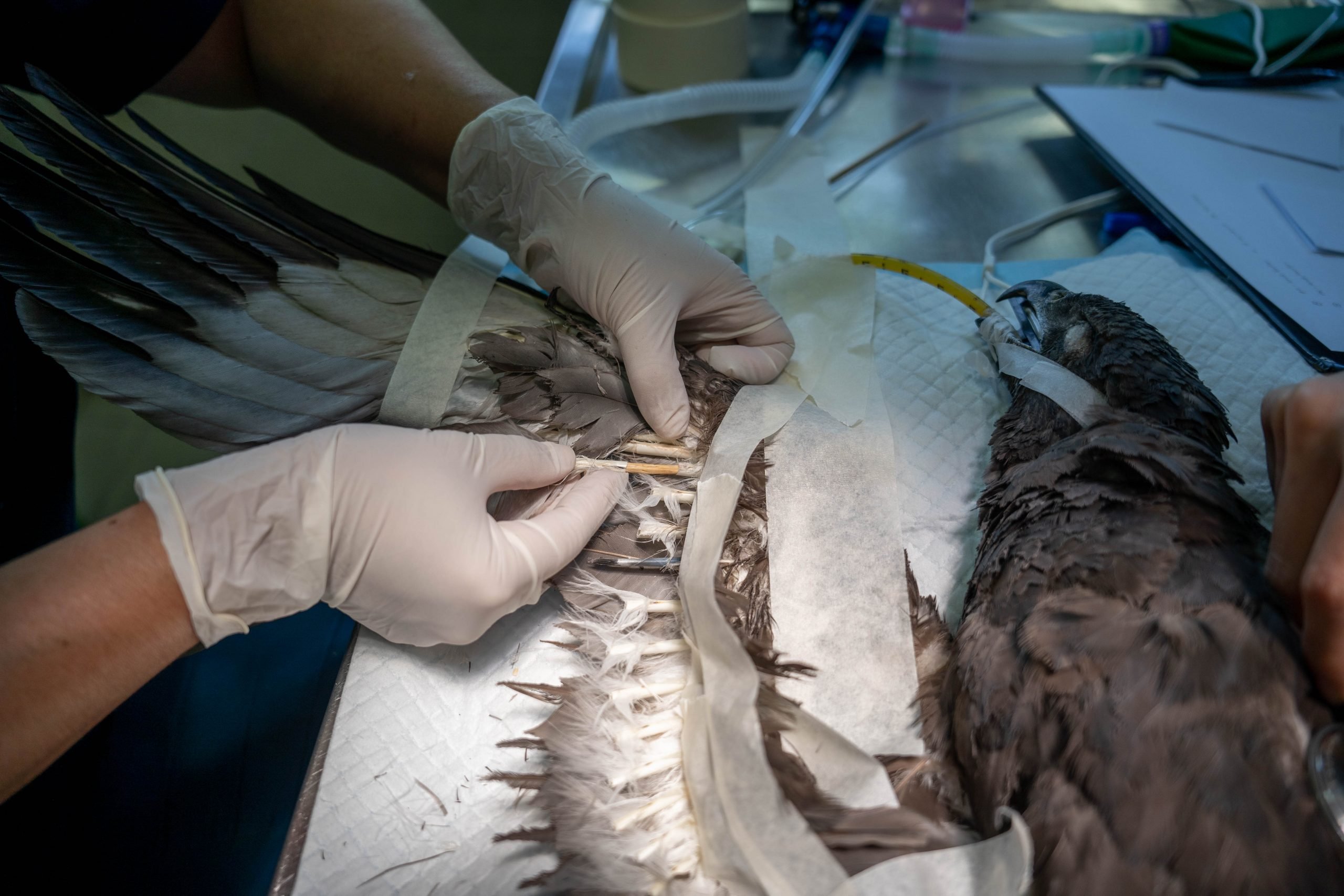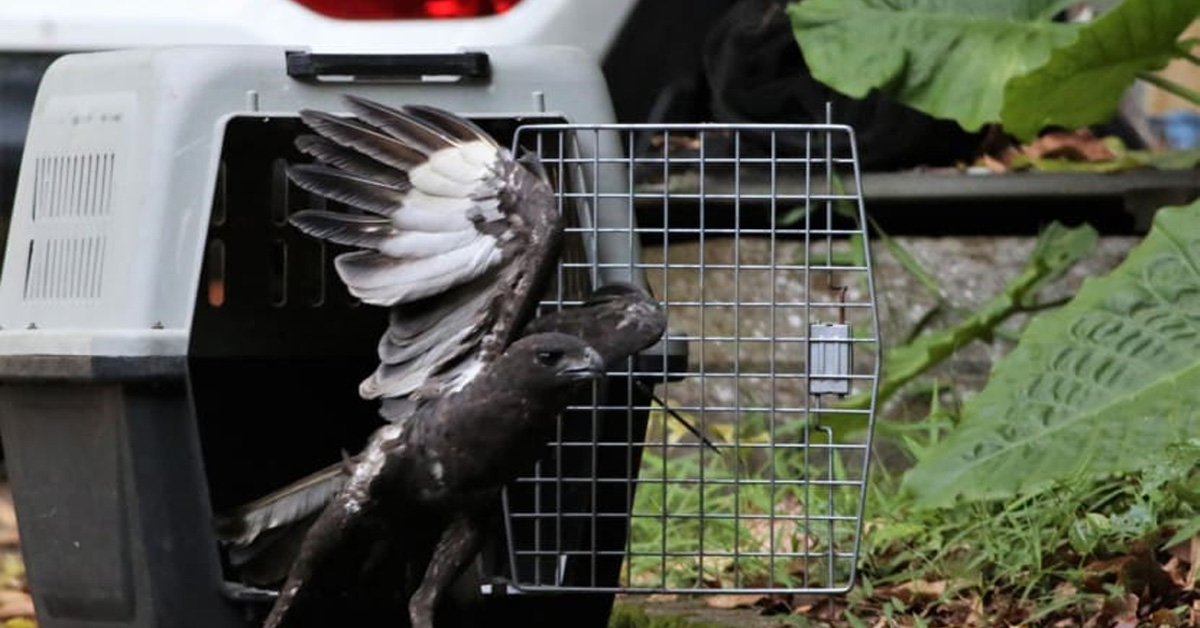Chopsticks are essential when it comes to eating most Asian food. From noodles to sushi, chopsticks are the first utensil to come to mind. Recently, chopsticks have found a new purpose – repairing an eagle’s wing.
Yes, you read that right.
An injured changeable hawk-eagle that had burnt feathers on its wings and tail was able to fly once again. All due to bamboo chopsticks.
On 7 January, the injured bird was spotted by a member of the public. It was unable to fly due to its wing and tail feathers being burnt. It was later rescued by National Parks Board (NParks) and taken the next day to Jurong Bird Park’s avian hospital.
Joining Feathers with Chopsticks
As the process of growing new feathers and flying again would take a year, veterinarians at Jurong Bird Park’s avian hospital decided to speed up the bird’s release through the use of imping.
Imping involved joining each of the bird’s burnt feathers to new ones by inserting bamboo chopsticks into the shaft of both feathers.

The new feathers were taken from other changeable hawk-eagles that had died due to injuries or illnesses. Both the new and old feathers were then secured by epoxy, which is safe for birds.
When the bird eventually moults, the new feathers grown will push the mended feathers out and they will drop naturally. The process of which is painless for the bird as feathers are made out of keratin, similar to human hair and nails.
Join our Telegram channel for more entertaining and informative articles at https://t.me/goodyfeedsg or download the Goody Feed app here: https://goodyfeed.com/app/
Meticulous Procedure
On 20 January, two vets and two vet nurses formed the team that carried out the replacement of over 50 feathers on the hawk-eagle’s wings and tails. The process took a few hours to complete.
Dr Ellen Rasidi, one of the vets said the method of imping is similar to putting hair extensions on humans. However, in imping, they have to be even more meticulous to ensure that each individual replacement feather is “carefully trimmed, measured and arranged in the right position” so as to match the bird’s original feather length and orientation.
This is vital as each feather has different shapes and fixing them incorrectly may affect the aerodynamics of the bird’s flight.
Successful Operation
After the successful replacement of the injured bird’s feathers, it was released the next day on 21 January. Since then, the bird has flown at least 10km, based on information from a tracking device attached to its leg.
Jurong Bird Park’s avian hospital sees around 200 wild birds each year. Most of them are successfully treated and released into the wild.
So next time you find yourself in the wild wild west of Singapore, maybe pay the park a visit. Who knows what new species of bird you might see?
Read Also:
- Dee Kosh Addresses His Charges in a New YouTube Video; Claims Media Had Portrayed Him Wrongly
- Man Cheated on Woman Even After She’s Donated 1 of Her Kidneys to Him
- Authorities Urged Condo Management to Ensure Each Household Only Receive 5 Visitors Per Day During CNY
Featured Image: National Parks Board





